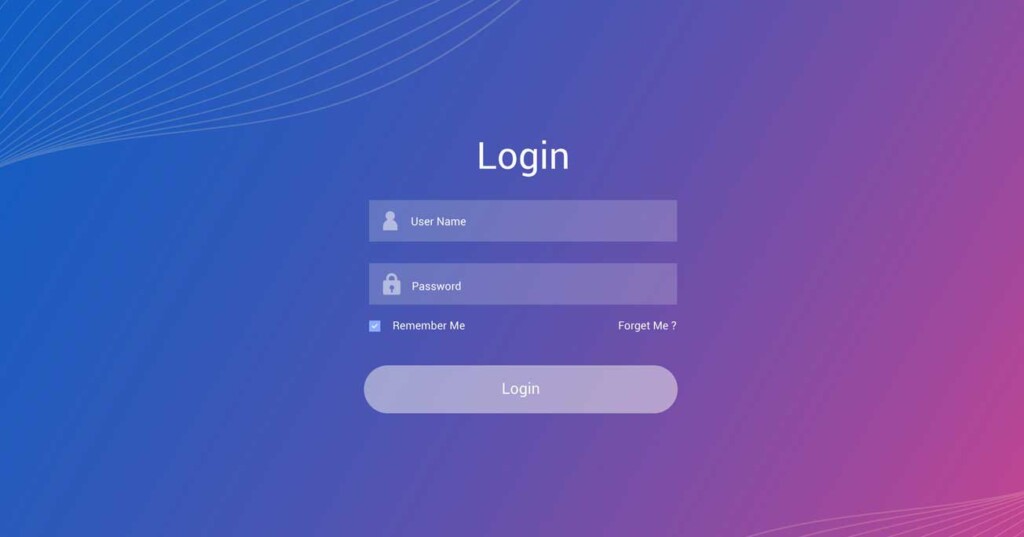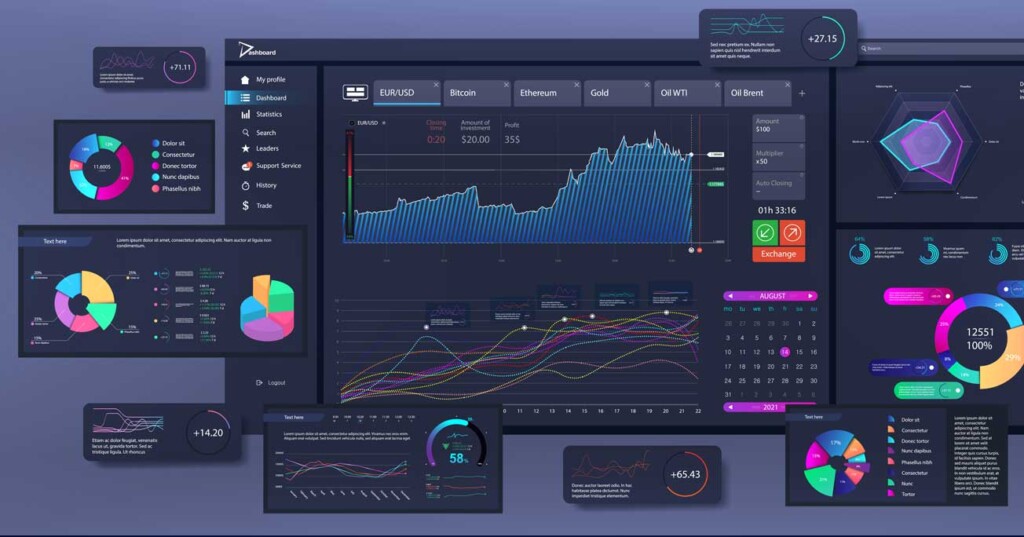
What Is A Web Application
Table of Contents
TLDR
Why Web Apps Are the Smart Bet for Founders in 2025
Most founders still default to native apps, but for the majority of products, that’s a costly mistake. Today’s web applications run offline, send push notifications, and deliver fast, seamless experiences across devices—all without the friction of app stores, dual codebases, or slow updates.
This article breaks down:
- What a modern web application really is (and why it’s not “just a website”)
- Why browsers are now powerful, cross-platform delivery engines
- How web apps outperform native in speed-to-market, cost, and usability
- What real scalability looks like (without technical debt)
- Case-backed insight from projects with Catch, Orbus, CYSIAM and more
If you’re building a digital product in 2025, don’t start by asking ‘native or hybrid?’ Start by asking: what creates traction fastest, with the least drag?
Chances are, it’s a web app.
• • •
• • •
Redefining the Modern Web Application

Let’s kill the old definition.
Ask a founder what a web application is, and you’ll often hear something like: “It’s a website that does stuff.” That’s not wrong, but it’s nowhere near complete. In today’s product landscape, the term what is a web application needs a fresh definition, one that reflects what’s actually being built and used across modern businesses.
The Real Definition (2025 Edition):
A web application is a piece of software accessed through a web browser, designed to deliver interactive, responsive, often personalised functionality to users, without requiring an install from an app store.
It’s not just a “fancy website.” It’s an application layer. A product experience. A revenue engine.
Web apps can:
- Manage bookings, purchases, or stock (like Shopify or Catch)
- Run entire operational workflows (like Slack, Notion, or Jira)
- Stream real-time data and dashboards (like Orbus or Google Analytics)
- Deliver content, personalised for each user’s context (like Storyblok or Webflow)
These aren’t brochure sites. They’re applications, delivered via the browser.
Why This Matters for Founders and CEOs
When you ask what is a web application, you’re really asking:
“Can this technology carry the weight of my business model?”
The answer? Often, yes, and far more cost effectively than a native build. Web apps remove the friction of installs. They run across devices. They let your team push updates daily without App Store delays. And critically, they reduce the need for separate codebases across iOS, Android, desktop and more.
This means:
- Faster time to market
- Easier feature deployment
- Better economics at scale
Web Apps Are Built to Scale, If You Get the Foundations Right
A proper web application isn’t cobbled together from templates and plugins. It’s architected, from the front-end logic and user interface down to the web server-side logic and cloud infrastructure. It uses web technologies like HTML, CSS, JavaScript, APIs, and browser-native storage. It adheres to a client-server architecture, where the heavy lifting happens server-side, but the experience feels instant.
And when done right? Users don’t notice they’re using a “web app” at all. They’re just… using your product. Seamlessly.
• • •
Why the browser is now a platform

There was a time when launching a digital product meant choosing your platform: iOS, Android, desktop. Each one had its own rules, SDKs, and quirks. But that world has shifted. Today, the modern web browser is no longer just a window to the internet, it’s a fully-fledged operating environment. And it’s capable of delivering experiences that rival native apps without the cost or compromise.
Web applications now leverage browser APIs for everything from offline caching and push notifications to camera access and location tracking. What used to demand a bespoke mobile build can now run beautifully in a browser, on mobile, tablet or desktop, often with better update speed and reach.
This isn’t theoretical. We’ve delivered web applications that operate offline in rural areas, launch from home screens, and even push dynamic content updates without full reloads. Progressive web apps take this even further, allowing users to install the experience to their device just like a native app, but without going through the app store.
What’s changed is the role of the browser itself. Modern browsers now handle sophisticated application logic. They cache assets locally, manage session state, interact with background services, and integrate with native device features. If you’re building a digital product in 2025, the browser isn’t just a delivery mechanism, it’s the platform.
Web apps offer faster deployment cycles, real-time iteration, and a significantly lower barrier to entry for users. You don’t have to convince someone to download and install. You send them a link. That’s it. For startups, that means quicker onboarding and less friction. For enterprise, it means broader compatibility and lower maintenance overhead.
Modern web apps are now expected to behave like real software, not static pages. And with technologies like service workers, local storage, and responsive frameworks, they do. Businesses that once defaulted to native are increasingly starting with browser-based products first, and only considering native later, if needed.
It’s not that native is obsolete. It’s that the browser has caught up. And in many cases, it’s overtaken.
• • •
“We need an app.” Do you?

Most founders still mean ‘native’. Most don’t need it.
When a founder says “We need an app,” it’s usually code for “We want something users can download from the App Store.” But that assumption is increasingly out of date. Not because native apps are bad, but because modern web apps now do 90% of what native used to own.
“If you’re not using the camera or GPS constantly, or gaming the GPU, there’s every chance a web app will serve you better.”
What I tell most clients in the first discovery session
We’ve tested this in the wild
When a leading fast food retainer came to me, they needed voice-activated ordering integrated with Siri and ultra-low latency at checkout. We built it natively, because the requirements justified the cost.
But for Catch, the equation was different. Anglers in rural areas don’t want to install another app. They want to book quickly, log a catch offline, and maybe earn rewards. We built a progressive web app that works beautifully on any device, without App Store delays, install friction, or update management.
Catch is now growing its user base across thousands of venues, while staying agile with every release.
“They’re not downloading an app. They’re clicking a link. That’s the conversion advantage of web.”
Founders chase ‘app store presence’, but often pay for it in traction
Web apps bypass the traditional gatekeepers. One link works across iOS, Android, desktop and tablet. You can push fixes live instantly. You don’t need to wait 5 days for review or maintain two separate codebases just to roll out a pricing change.
That means faster learning, lower spend, and fewer blockers between your team and your users.
And here’s the thing most product leads miss:
Today’s web applications can still be installed. Still send push notifications. Still operate offline. Still look and feel like native mobile apps. But they’re faster to build, easier to update, and more inclusive by design.
If you genuinely need deep hardware integration, go native. But don’t assume that’s the bar. Because web apps now cover the full spectrum of serious business capability, with none of the deployment baggage.
“What used to require a native build now runs straight from a browser, and your users won’t know the difference.”
• • •
Behind the curtain: how web apps actually work

It’s not magic. It’s smart architecture.
Modern web applications feel instant, connected, and seamless, but there’s a serious engine underneath. And understanding what’s happening under the hood helps founders make better calls about performance, scale, and roadmap.
“If it loads fast, syncs in real time, and works offline, it’s doing a lot more than displaying pages.”
The basics (without the waffle)
A web app runs in the browser but is powered by a connected architecture made up of:
- A client (what runs in the user’s browser)
- A server (the remote server doing the heavy lifting)
- A set of APIs (for talking between the two)
- And a database (for storing, sorting and serving up content or user actions)
This is what’s known as the client server model, and it’s the foundation of nearly every scalable digital product.
When someone uses a modern web app, like logging a fishing session in Catch or scanning a health product, they’re not just clicking buttons. Their device is talking to a web application server, which processes logic, stores data securely, and returns only what’s needed to keep things fast and responsive.
“A good web app doesn’t send everything, it sends the right thing at the right moment.”
What’s changed? The browser got smarter
Modern browsers aren’t just viewers, they’re execution environments. They cache assets locally, manage service workers, and enable offline functionality that rivals many native apps or hybrid apps. That means parts of your app can load even when the internet connection is flaky, or fully offline.
This matters commercially. In sectors like field services, rural sports, or healthcare, where internet connectivity isn’t guaranteed, web apps can still deliver critical functionality, without needing a native install or mobile data plan.
We’ve built web applications that:
- Store user input locally and sync it later (Catch)
- Cache interactive dashboards client-side (Orbus)
- Queue outbound data when offline (Grdian)
- Deliver new UI components without redeploying the whole app
“A modern web application behaves like a native app, because it shares most of the architecture. The only difference is where it runs.”
What does the application server perform?
Everything your user doesn’t see, but still relies on.
- Authenticating users
- Enforcing permissions
- Running business logic (e.g. calculating session stats, pulling relevant records)
- Managing updates, workflows and data processing in real-time
It’s not just “a backend”. It’s your product’s brain. And when architected properly, it makes complex applications feel effortless.
• • •
Designing for real users in real conditions

The real world is messy. Your app should still work.
In boardrooms, it’s easy to assume your user has perfect signal, perfect focus, and the latest device. But in the wild, things look different: cracked screens, weak reception, multiple tabs open, or a user distracted mid-journey. That’s where great web applications earn their edge.
“If your product only works in perfect conditions, it doesn’t work.”
Context is everything
When we designed Catch, we knew the user experience had to stretch across very different user environments. An angler on the edge of a lake. A fishery manager in a cabin with no Wi-Fi. An angler booking a session on their phone while walking home. Each one had different needs, screen sizes, and levels of attention. So we designed for that variability from the start.
The interface had to work on any user’s mobile device, regardless of age, brand, or operating system. Navigation had to be fast and simple even with limited access to signal. The app needed to allow catch reports to be logged offline and synced later. Every interaction had to feel smooth, not stuck.
Web apps are now mature enough to handle those challenges
They manage offline functionality through service workers. They detect internet connectivity status automatically and adjust behaviour. They adapt layouts for mobile devices and support touch-friendly interactions without breaking desktop usability.
“A web app that fails gracefully beats a native app that fails hard.”
The secret to better UX? Think like a human
Every time someone taps a button or fills in a field, they’re not just interacting with a layout, they’re navigating mental load. The best web applications reduce that load. They make decisions obvious. They hide unnecessary complexity. They give feedback immediately and clearly.
This means:
- Prioritising interactive elements that respond fast, even if the connection is slow
- Respecting the limitations of the device, browser, and attention span
- Designing for moments, not just screens
n our work with CYSIAM, we weren’t just visualising data, we were helping security consultants make fast, high-stakes decisions under pressure. The old process involved spreadsheets and Word docs. We replaced it with a streamlined interface that presented only what mattered, when it mattered. Bigger inputs, clearer flows, and visual prioritisation helped turn fragmented forms into structured insight. The user experience wasn’t just about reporting, it was about mental clarity, reduced risk, and faster action when time was tight.
“Design for the worst moment, not the best-case demo.”
Web apps enable users to get value even when everything isn’t ideal
That’s what makes them powerful. They adapt to multiple users, across devices and screen sizes, in a way that doesn’t rely on a specific operating system or perfect signal.
That flexibility isn’t just good UX, it’s good business.
• • •
Functionality, not just features: where web apps quietly lead

The products that win aren’t the flashiest. They’re the ones that actually get used.
Founders often come to us with a list of features they want to build. Integrations. Real-time dashboards. Messaging. Gamification. And while that ambition’s great, the truth is: features don’t drive value. Functionality does.
“If it doesn’t help the user do something better, faster, or with less stress, it’s not a feature. It’s a distraction.”
Web apps excel at real world utility
Take project management tools like Monday or Asana. Or business instant messaging services like Slack and Teams. These platforms aren’t downloaded from an app store, they’re accessed in-browser, on any device. And they perform. Real-time updates. State sync. User roles. Embedded content. All handled by the browser, backed by a smart application layer.
Why? Because these tools rely on continuous access, multi-device support, and cross-team collaboration. They need to work for multiple users, on different devices, in different environments. That’s what web apps are built for.
“The strongest business tools aren’t locked behind OS permissions. They’re available on a link, right now.”
The same applies in finance
Online banking web apps now outperform many native counterparts in usability, clarity, and responsiveness. Features like biometric login, secure messaging, and real-time transaction updates are all possible through modern web technologies. And because they run on standard browsers, they can be updated instantly, without forcing users to download anything.
Even more niche financial tools, like invoicing dashboards, FX platforms or KYC portals, are increasingly going web-first. Not just for convenience, but because that’s where security, update speed, and cross-platform compatibility all align.
Content management systems, online forms, and subscription-based services all follow the same pattern
When we designed internal tooling for clients like CSYIAM and Catch, we focused on workflows, speed, clarity, and intuitive control. It wasn’t about bells and whistles. It was about letting users focus. Whether it’s uploading assets, managing bookings, or reviewing sensitive content, the most valued features are often invisible. They just work.
Web apps offer those outcomes, without the infrastructure drag.
“You don’t win by building more features. You win by helping people get their job done faster, with fewer mistakes.”
• • •
Building complex, scaling simply

Complexity is fine, if it’s designed to grow with you.
It’s one thing to launch an MVP. It’s another to evolve that product across multiple audiences, data flows, and strategic goals without it breaking down. That’s where most digital products hit the wall, not in the build, but in the scale.
“Your launch isn’t the finish line. It’s the start of everything you’ll need to change, fix or grow.”
Web apps handle complexity by design
A wel -architected web application separates concerns: the frontend handles the interface, the backend handles the logic, and APIs manage the flow between. This structure makes it far easier to extend features, add users, or swap out components without starting from scratch.
Take Orbus Software. They came to us with an underperforming site, bloated layouts, slow load times, no clear journey logic. Under the hood, their enterprise content had outgrown the original structure. We rebuilt it with modularity in mind: component libraries, structured metadata, responsive layouts, and SEO-ready architecture. The result wasn’t just a better website, it was a system their team could scale themselves.
Complex applications aren’t built all at once, they’re layered over time
Think of subscription-based web applications. They start simple: a sign-up flow, a dashboard, maybe a billing system. But over time, they need admin controls, usage analytics, onboarding logic, referral incentives, role-based permissions, integrations… It adds up fast.
What protects you from collapse isn’t the feature list, it’s the structure underneath.
“Every shortcut in the early build becomes a bottleneck later. Unless you’ve planned for layers.”
Web application data needs to be structured from day one
Poorly modelled data creates brittle logic. As more user types, devices and integrations come online, that fragility compounds. That’s why we prioritise clear data flows, scalable schemas, and content independence, so features can grow without breaking everything around them.
In our work with Globium, we built systems to support investor dashboards, crypto asset metadata, and global real estate filters, all within a clean, composable platform that supports growth without rework.
And don’t forget the team
The web application development process matters, but so does the editorial and operational side. A content management system that works at 10 pages needs to work at 1,000. A product support flow that works with 5 users needs to work with 5,000. That’s where structure wins over speed.
“Most web apps fail not because they don’t work, but because they weren’t built to grow.”
• • •
Betting on outcomes, not technology

You’re not building tech. You’re building traction.
Too many founders get stuck asking the wrong questions, Should we go native? What’s the best framework? Do we need offline sync on day one? Those aren’t business questions. They’re build questions.
“You don’t need to pick the best technology. You need to pick the smartest path to value.”
Web applications, done properly, give you the clearest line between idea and impact. They let you launch faster, learn quicker, adapt more easily, and reach more users across more devices, all with fewer moving parts. That’s not just an architectural win. It’s a commercial one.
- You don’t need an app.
- You need a product people can access, use, trust, and come back to.
- You need something your team can improve, your investors can back, and your customers can talk about.
That’s what modern web apps offer.
- They’re fast.
- They’re flexible.
- They’re scalable.
And most importantly, they’re enough.
- Enough to get live.
- Enough to test.
- Enough to grow.
- Enough to win.
If the moment comes when you truly need native integrations, heavy graphics, or deep platform control, fine. You can make that move later, with proof and budget behind it.
- But don’t start with tech for tech’s sake.
- Start with the outcome you need.
- Then build the smartest way to get there.
Ready to build something that actually works?
If you’re a founder or product lead wondering whether to build native, hybrid or web-first, don’t guess. Let’s walk through it together.
We’ve helped brands like Catch, CYSIAM, and Orbus go from concept to traction with web apps that scale cleanly and deliver results fast. Whether you’re stuck on architecture, user interaction, user experience or rollout strategy, I’m happy to offer honest advice, no fluff, no pitch.
Drop me a message if you want a straight answer on what’s right for your product.
Let’s build smarter.e from the outset minimises vulnerabilities and embeds a culture of security within the team.
• • •
Top Supporting Sources for the Article
- Vercel / Core Web Vitals Metrics https://vercel.com/blog/introducing-core-web-vitals
Google Developers – Web Fundamentals https://developer.mozilla.org/en-US/docs/Web/Progressive_web_apps
Google Search Central – JavaScript SEO basics https://developers.google.com/search/docs/crawling-indexing/javascript - W3C Web Applications Working Group https://www.w3.org/groups/wg/webapps
- Smashing Magazine – Web App Architecture 2024+ https://www.smashingmagazine.com/2024/03/web-application-architecture-best-practices/
- Google – Case Studies: Twitter Lite (PWA) https://web.dev/twitter/
- MobiLoud – Native vs PWA Cost Comparison https://www.mobiloud.com/blog/native-vs-pwa
- Cloudflare Blog – Offline-First and Service Worker Patterns https://blog.cloudflare.com/offline-first/
- WebAIM Million Report (Accessibility Audit )https://webaim.org/projects/million/
- OWASP Top 10 – Web Application Security Risks https://owasp.org/Top10/
• • •
• • •





